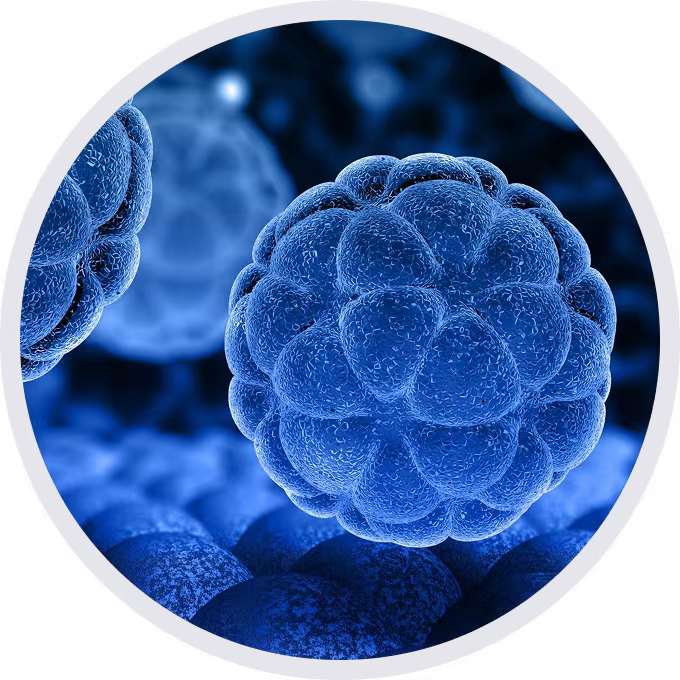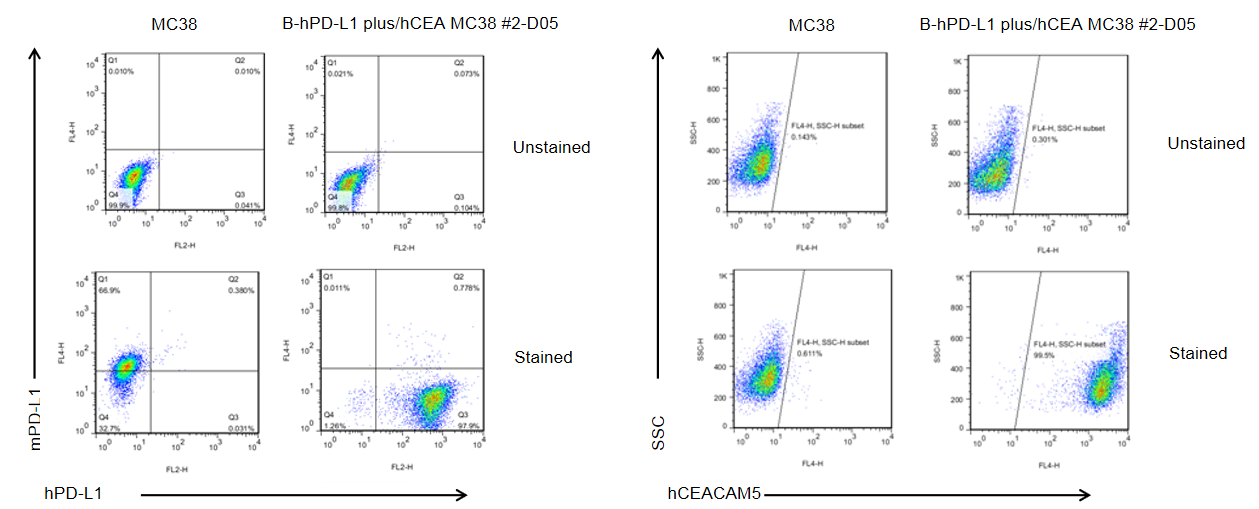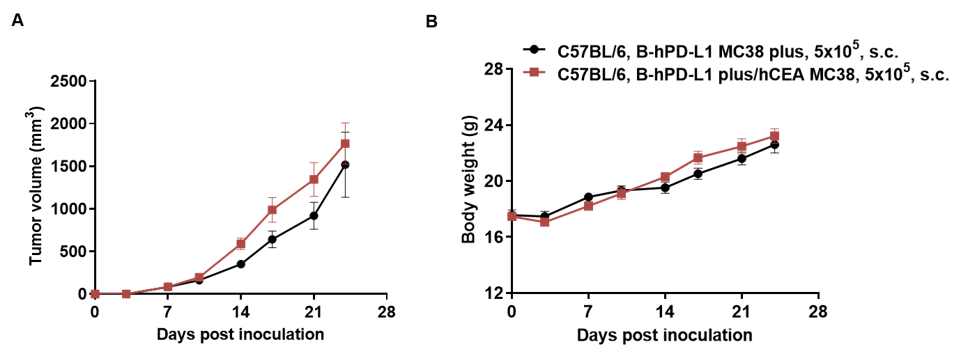


• 320722
| Product name | B-hPD-L1 plus/hCEA MC38 |
|---|---|
| Catalog number | 320722 |
| Strain background | C57BL/6 |
| Aliases | PD-L1: CD274, PDCD1L1CEA: CD66e, CEACAM5 |
| Tissue | Colon |
| Disease | Colon carcinoma |
| Species | Mouse |
| Application | B-hPD-L1 plus/hCEA MC38 cells have the capability to establish tumors in vivo and can be used for efficacy studies. |
on this page
The mouse Pdl1 gene gene was replaced by human PD-L1 coding sequence and human CEA coding sequence was inserted into the ROSA26 locus in B-hPD-L1 plus/hCEA MC38 cells. Human PD-L1 and CEACAM5 are highly expressed on the surface of B-hPD-L1 plus/hCEA MC38 cells.
Gene targeting strategy for B-hPD-L1 plus/hCEA MC38 cells. The exogenous promoter and human PD-L1 coding sequence was inserted to replace part of murine exon 3. The insertion disrupts the endogenous murine Pdl1 gene, resulting in a non-functional transcript. The exogenous promoter and human CEA coding sequence was inserted into the ROSA26 locus in murine.

PD-L1 and CEA expression analysis in B-hPD-L1 plus/hCEA MC38 cells by flow cytometry. Single cell suspensions from MC38 and B-hPD-L1 plus/hCEA MC38 cultures were stained with species-specific anti-PD-L1 and anti-CEA antibodies. Human PD-L1 was detected on the surface of B-hPD-L1 plus/hCEA MC38 cells. Human CEA was detected on the surface of B-hPD-L1 plus/hCEA MC38 cells. The 2-D05 clone of B-hPD-L1 plus/hCEA MC38 cells was used for in vivo experiments.

Subcutaneous homograft tumor growth of B-hPD-L1 plus/hCEA MC38 cells. B-hPD-L1 plus/hCEA MC38 cells (5x105) and B-hPD-L1 MC38 plus cells (5x105) were subcutaneously implanted into C57BL/6 mice (female, 5-8-week-old, n=5). Tumor volume and body weight were measured twice a week. (A) Average tumor volume ± SEM. (B) Body weight (Mean± SEM). Volume was expressed in mm3 using the formula: V=0.5 X long diameter X short diameter2. As shown in panel A, B-hPD-L1 plus/hCEA MC38 cells were able to establish tumors in vivo and can be used for efficacy studies.